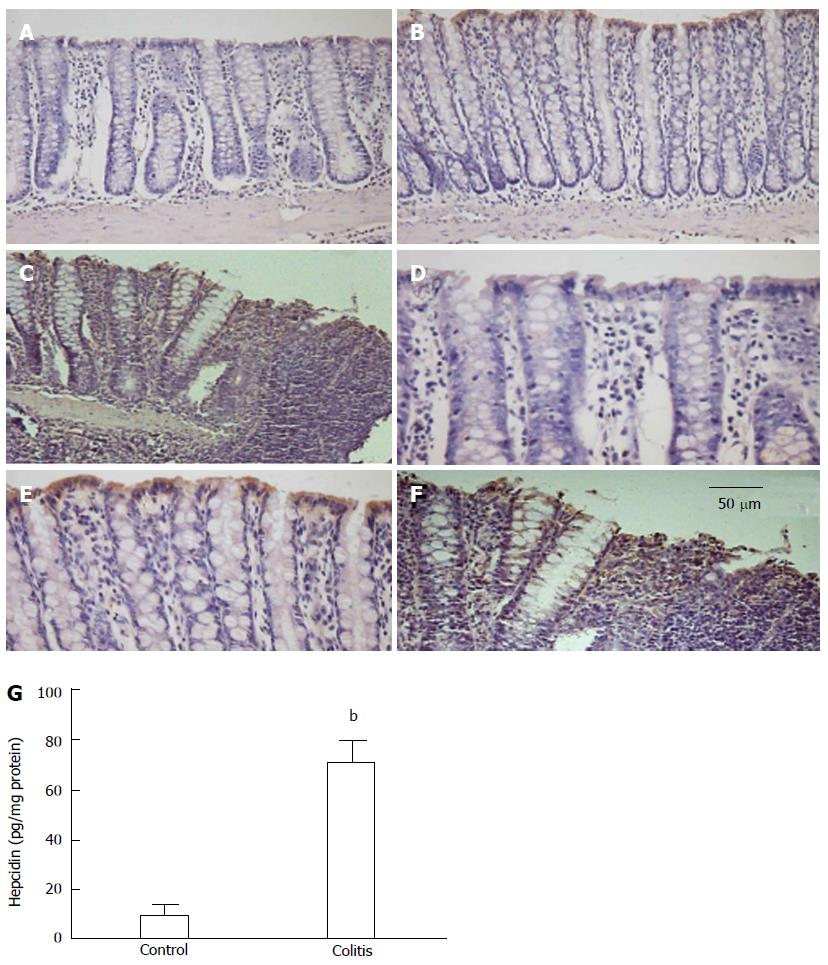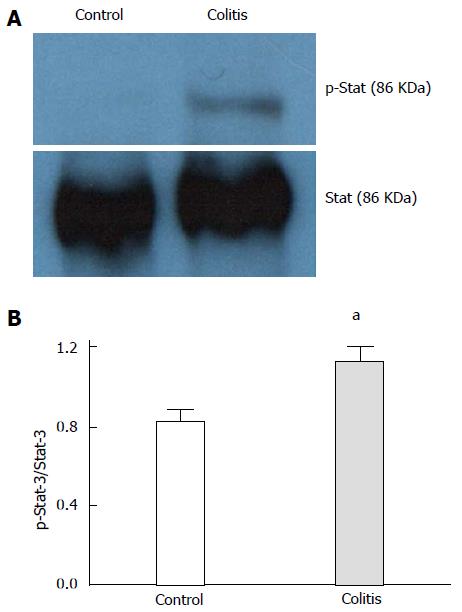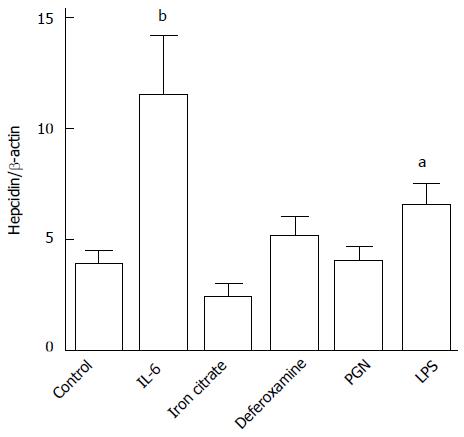Copyright
©2014 Baishideng Publishing Group Co.
World J Gastroenterol. Apr 21, 2014; 20(15): 4345-4352
Published online Apr 21, 2014. doi: 10.3748/wjg.v20.i15.4345
Published online Apr 21, 2014. doi: 10.3748/wjg.v20.i15.4345
Figure 1 Colonic hepcidin expression in control and colitis rats.
A: Immunohistochemistry of control rat tissue (x 100); B: Immunohistochemistry of an adjacent colitic area (x 100); C: Immunohistochemistry of a colitic area (x 100); D: Immunohistochemistry of control rat tissue (x 400); E: Immunohistochemistry of an adjacent colitic area (x 400); F: Immunohistochemistry of a colitic area (x 400); G: Enzymatic assay detection of hepcidin expression levels. Data are expressed as the means ± SE (n = 4 per group), and bP < 0.01 compared with control.
Figure 2 Stat-3 phosphorylation levels in control and colitic rats.
A: Representative Western blot images (from one individual experiment); B: Bar graph densitometry quantifications of phospho-Stat-3 expression levels that were normalized to colonic Stat-3 expression levels (n = 4 per group). Data are expressed as the means ± SE, and aP < 0.05 compared with control.
Figure 3 Prussian blue reaction assessing the presence of ferric iron and ferritin in colons.
A: Control (× 200); B: Colitis (× 200). Arrows denote areas of Prussian blue reactivity.
Figure 4 Analysis of hepcidin mRNA expression (hepcidin to β-actin ratio) in HT-29 cells.
Untreated control cells were compared with cells treated with interleukin-6 (IL-6) (40 ng/mL), iron citrate (20 μmol/L), deferoxamine (30 mmol/L), lipopolysaccharide (LPS) (1 μg/mL) or peptidoglycan (PGN) (10 μg/mL). Data are expressed as the means ± SE of 2 experiments performed in triplicate. aP < 0.05 and bP < 0.01 compared with control.
- Citation: Gotardo &MF, Ribeiro GA, Clemente TRL, Moscato CH, Tomé RBG, Rocha T, Pedrazzoli Jr J, Ribeiro ML, Gambero A. Hepcidin expression in colon during trinitrobenzene sulfonic acid-induced colitis in rats. World J Gastroenterol 2014; 20(15): 4345-4352
- URL: https://www.wjgnet.com/1007-9327/full/v20/i15/4345.htm
- DOI: https://dx.doi.org/10.3748/wjg.v20.i15.4345












